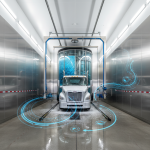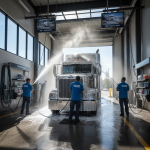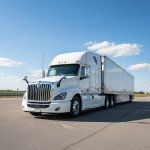Most new truck washes today are built by entrepreneurs who are new to truck washing and the trucking service industry. Often, these entrepreneurs may have backgrounds in car washes, real estate or pressure washing. Site selection seems very easy. Find a lot of truck traffic and activity and it is the perfect place for a truck wash. This premise may or may not be true.
LazrTek believes that sometimes the above scenario works, and sometimes it doesn’t. Below is a case study on a recently built state-of-the-art truck wash that is grossly underperforming but surrounded by truck traffic and trucking activity. The new truck wash is beautiful and well done at a cost of over $2.5mm.
Truck Wash Case Study
In a recent interview with the owners, it became apparent they would prefer a different location, a different wash solution and a different water reclamation system. Veterans of the car wash business, these entrepreneurial owners chose the perfect truck wash site.
The site was 10 acres, more or less, just across the interstate from a robust and high traffic intermodal port of entry. At least 1000 tractors per day enter this active intermodal port, pick up a trailer and exit the port via an on-ramp across the interstate and drive directly in front of this new state-of-the-art touchless drive-through truck wash. Just 1 block from an active Loves Travel Center and across from the super traffic-heavy intermodal port and with direct Interstate Highway visibility, the site was a no-brainer to be incredibly productive.
Professional Feasibility Study vs Wash Equipment
Rather than obtaining a Professional Feasibility Study, the entrepreneurial owners decided to focus on the wash equipment vendor for advice in their new truck wash venture because the truck traffic numbers were so compelling. No one talked to the truck drivers entering and leaving the intermodal port and no one with trucking knowledge reviewed the traffic patterns of the heavy local truck traffic. How could you miss? 1000 trucks per day leaving the intermodal port and passing directly in front of our new truck wash? Assuredly, it would be a giant success with a Love’s Travel Stop, servicing 450 trucks a month and fueling hundreds daily, just steps away.
I’m sure you are salivating and slightly jealous over this exceptional site for a truck wash, add the state of the art and technologically advanced touchless drive through wash system to the equation and you have the perfect truck wash to kill it, make lots of money and have more than enough customers. In fact, the entrepreneur owners were worried they would need traffic direction to handle all their customers. They envisioned earning 80% of the truck traffic leaving the intermodal port would stop to wash and be clean to make their travels.
Unfortunately, because the entrepreneur owners are car wash experts and the truck wash equipment vendor was also certain they had a winning location, they determined they did not need a feasibility study. This deal was too good and anyone could easily see it. In fact, the expectations were so high that the equipment vendor talked the excited owners into building a 210 ft. wash bay and a in ground water reclamation system big enough to wash several hundred trucks per day.
With over $2mm in development costs, the new state of the art touchless drive through truck wash opened for business with great anticipation and visions of brinks armored trucks being needed to haul off the massive profits.
In an interview with the general manager of the new truck wash several months after opening, we learned a slightly different story than visions of armored trucks to haul off the loot. The GM stated he and the staff spend most of their time cleaning walls and equipment as business is really slow. Asked “how this could be” the GM patiently explained a few errors in judgement had occurred, and new information was learned in the last several months of operations, as follows:
- Truck drivers in their tractors wait quite a while in que in the intermodal port to pick up their Trailer. By the time they get their trailer they are more than ready to hit the open road. They don’t want to stop for services. They are ready to drive after a long wait sitting before hooking up their load.
- If the truck drivers were going to wash their tractor, it would be before entering the intermodal port rather than after leaving the port. The truck wash in question gets all egress intermodal port traffic and zero ingress traffic to the port.
- The trailers picked up at the intermodal port are TEU shipping containers and are owned by international shipping companies, not by the driver or by a fleet operator. Who will pay to wash the intermodal trailer? It is important to realize that a shipping container is different than a traditional trailer designed for domestic transport.
- The touchless drive through wash bay was designed by a leading truck wash equipment vendor and is designed to wash tractor and trailer and not just tractor. It is uneconomical to charge only for the tractor wash and wash the intermodal trailer for free. Unfortunately, the existing touchless drive through wash system is not reconfigurable to wash only tractors.
- The truck wash in this case study was unintentionally built in a drive-by location and on the egress rather than ingress access point to the intermodal port rendering truck traffic opportunity to gain wash customers principally useless.
- Truck traffic counts were great and indicated substantial customer opportunity.
- The Loves Travel center at this same intersection is underperforming in comparison to other Loves travel centers due to much the same reasons as outlined for the truck wash.
- The wash equipment package chosen for the principle truck traffic volume in this wash area was not the proper solution for the dominant traffic type.
Conclusion
The truck wash studied was built on the wrong site and needs to be relocated or the wash system needs to be replaced with tractor-only wash equipment which may not alone solve the problem. Unfortunately, this truck wash developer did not conduct adequate feasibility and is experiencing economic struggles in operating the business.
LazrTek estimate that 80% of Truck Wash entrepreneurs might make this same site selection mistake and traditional truck wash equipment manufacturers typically install what they know and manufacture rather than what the truck wash customers may need.
What Is a Feasibility Study?
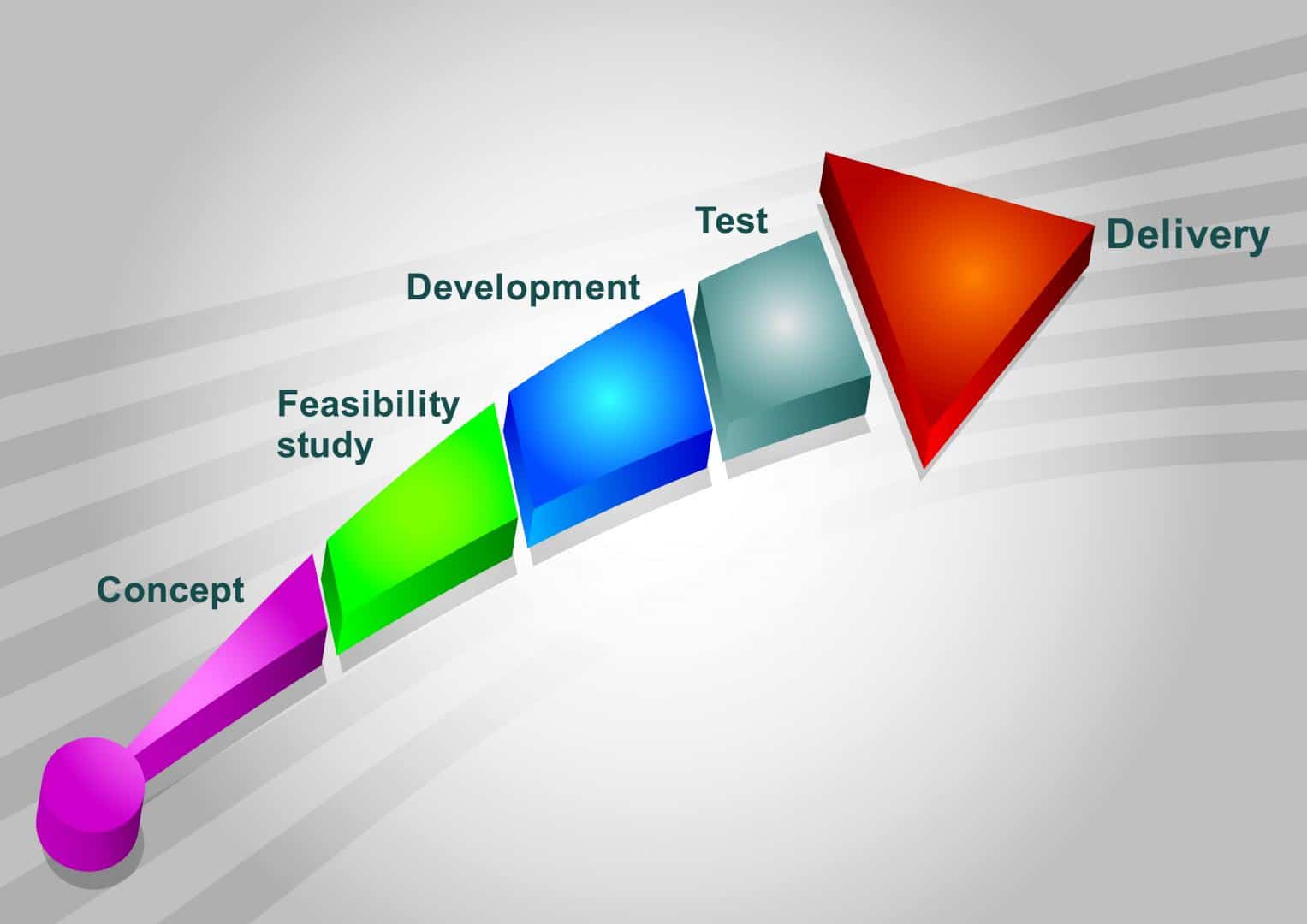
A feasibility study is simply an assessment of the practicality of a proposed project plan or method. This is done by analyzing technical, economic, legal, operational and time feasibility factors. Just as the name implies, you’re asking, “Is this feasible?” For example, do you have or can you create the technology to do what you propose? Do you have the people, tools and the resources necessary? Will customers want what you are proposing to provide? And if customers want it, will they pay an amount that gets you the ROI you require to be sustainable?
When should entrepreneurs and developers do a feasibility study? It should be done during that point in the project management life cycle after the business case has been completed.
So, that’s the “what” and the “when” but how about the “why?” Meaning, why do you need a feasibility study? Well, it determines the factors that affect project feasibility, making it pretty important. Many entrepreneurs and developers believe feasibility studies are only to make the lender happy or to ensure adequate traffic numbers are available. Hence, sometimes superficial and very inexpensive partial feasibilities are performed. Other times formal feasibility studies are avoided to entrepreneurial fear to be wrong or because the site is already owned.
Rest assured, a professional feasibility study that costs over $10k will go into much greater depth and uncover at least the signals that there may be a problem. Professional truck wash feasibility studies actually spend time talking to the perceived customer base and the nearby demand generators to ensure that customer demand will be as required to reach sustainability and that the customers will pay a price for the truck wash to make a sufficient profit to be a viable business. An in-depth study will also develop the design and proper equipment necessary to satisfy the actual customer demand.
What Is Included in a Feasibility Study Report?
The findings of your project feasibility study are compiled in a feasibility report that usually includes the following elements.
- Executive summary
- Description of product/service
- Technology considerations
- Product/service marketplace
- Marketing strategy
- Organization/staffing
- Schedule
- Financial projections
- Findings and recommendations
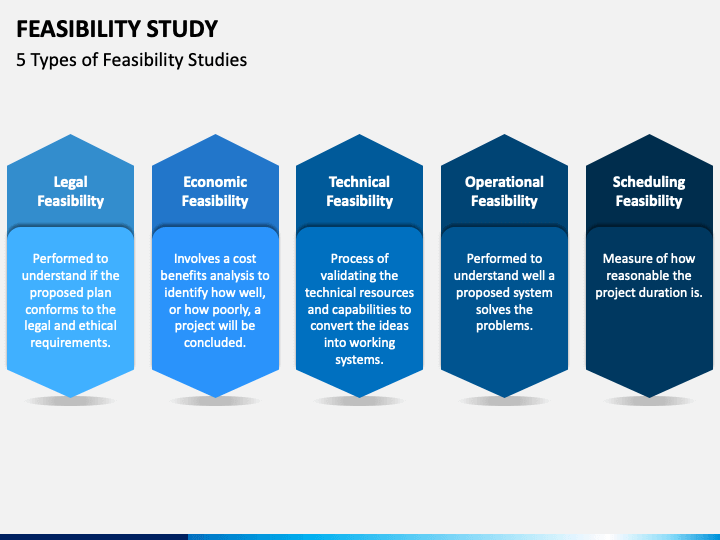
Types of Feasibility Study
- Technical Feasibility:
Consists in determining if your organization has the technical resources and expertise to meet the project requirements.
- Economic Feasibility:
You’ll need to do an assessment of the economic factors of your project to determine its financial viability. You can use a cost-benefit analysis to compare its financial costs against its projected benefits.
- Legal Feasibility:
Your project must meet legal requirements. That includes laws and regulations that apply to all activities and deliverables in your project scope.
- Operational Feasibility:
Operational feasibility refers to how well your project matches your organization’s capacity planning, resources, strategic goals and business objectives.
- Time Feasibility:
Estimate the time that will take to execute the project and set deadlines. Then think how your project timeline fits with your current operations, such as your demand planning, production schedule, among many other things.
7 Steps of a Feasibility Study
1. Conduct a Preliminary Analysis
Begin by outlining your project plan. You should focus on an unserved need, a market where the demand is greater than the supply, and whether the product or service has a distinct advantage. Then you need to determine if the feasibility factors are too high to clear (i.e. too expensive, unable to effectively market, etc.).
2. Prepare a Projected Income Statement
This step requires you to work backward. Start with what you expect the income from the project to be and then what project funding is needed to achieve that goal. This is the foundation of an income statement. Things to take into account here include what services are required and how much they’ll cost, any adjustments to revenues, such as reimbursements, etc.
3. Conduct an In-Depth Market Survey, or Perform Detailed Market Research Including Interviewing Prospective Customers
This step is key to the success of your feasibility study, so make your market analysis as thorough as possible. It’s so important that if your organization doesn’t have the resources to do a proper one, then it is advantageous to hire an outside firm to do so.
The market research is going to give you the clearest picture of the revenues and return on investment you can realistically expect from the project. Some things to consider are the geographic influence on the market, demographics, analyzing competitors, the value of the market and what your share will be and if the market is open to expansion (that is, response to your offer).
4. Plan Business Organization and Operations
Once the groundwork of the previous steps has been laid, it’s time to set up the organization and operations of the planned project to meet its technical, operational, economic and legal feasibility factors. This is not a superficial, broad-stroke endeavor. It should be thorough and include start-up costs, fixed investments and operating costs.
These costs address things such as equipment, merchandising methods, real estate, personnel, supply availability, overhead, etc.
5. Prepare an Opening Day Balance Sheet
This includes an estimate of the assets and liabilities, one that should be as accurate as possible. To do this, create a list that includes items, sources, costs and available financing. Liabilities to consider are such things as leasing or purchasing of land, buildings and equipment, financing for assets and accounts receivables.
6. Conduct a Sensitivity Analysis
To ensure longevity of the business post sustainability, a sensitivity analysis is necessary to predict the risk of key resource prices, labor costs, maintenance, repairs, key operational equipment life, customer life cycle, industry stability and general growth rate, etc.
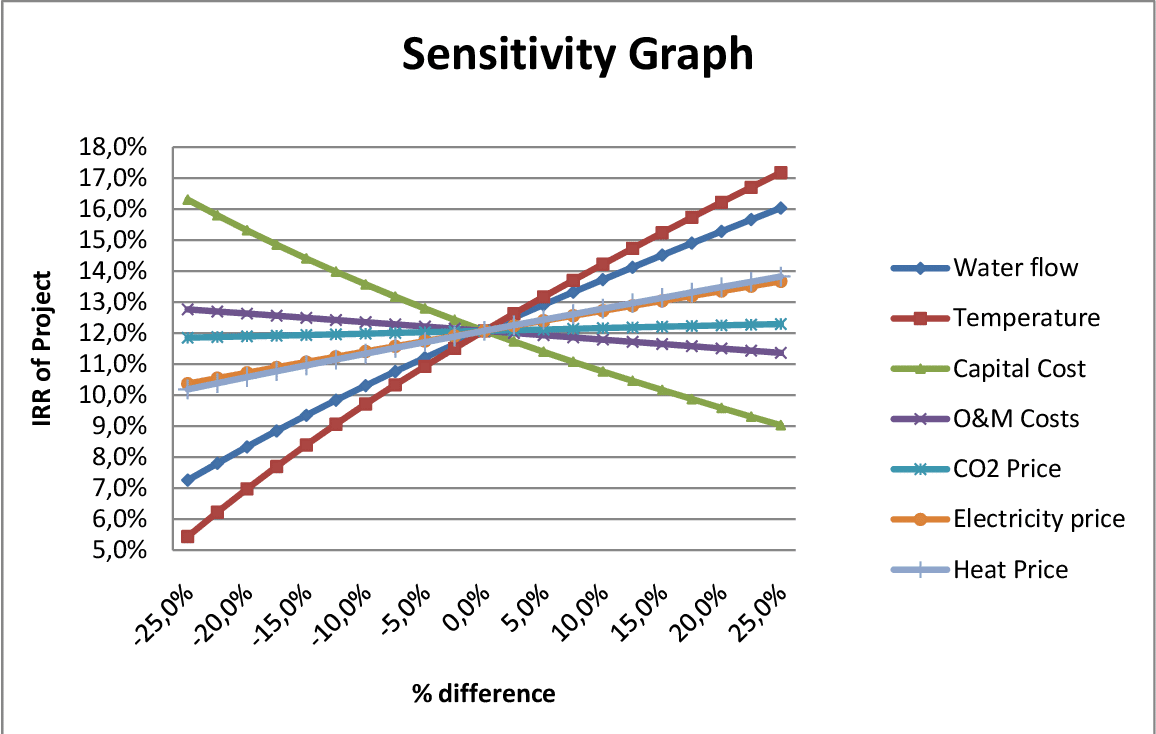
6. Review and Analyze All Data
All these steps are important, but the review and analysis are especially important to make sure that everything is as it should be and that nothing requires changing or tweaking. So, take a moment to look over your work one last time.
Reexamine your previous steps, such as the income statement, and compare it with your expenses and liabilities. Is it still realistic? This is also the time to think about risk, analyze and manage, and come up with any contingency plans.
7. Make a Go/No-Go Decision
You’re now at the point to make a decision about whether the project is feasible or not. That sounds simple, but all the previous steps lead to this decision-making moment. A couple of other things to consider before making that binary choice is whether the commitment is worth the time, effort and money and is it aligned with the organization’s strategic goals and long-term aspirations.
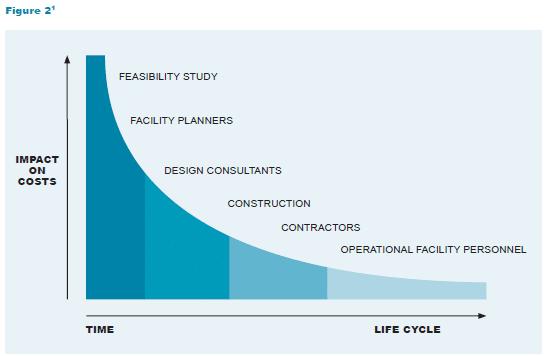
Best Practices for a Feasibility Study
- Use project management software to organize your data and work efficiently and effectively
- Use data and technology, not mere assumptions, that gives you leverage
- Involve the appropriate stakeholders to get their feedback
- Use in depth market research to further your data collection
- Do your homework and ask questions to make sure your data is solid and supported by real customers

If your project is feasible then the real work begins. LazrTek feasibility studies help you plan more efficiently. Our Gantt charts organize development tasks, set deadlines, add priority and links dependent tasks to avoid delays. But unlike superficial feasibility work that essentially only collects traffic counts and local demographics, we calculate the critical path for you and set a baseline to measure project variance once you move into the project execution phase. Our predictions of who will be your ideal customer and wash volumes and resulting revenues of the completed operation will be very accurate. With this information we design the exact right marketing strategy to be noticed by your ideal customer and chosen as the wash of choice.
Contact LazrTek today to get a free quote for your truck wash feasibility study to ensure you don’t waste your money on the wrong site, the wrong positioning in the market, the wrong wash layout and wash equipment or the wrong marketing plan.
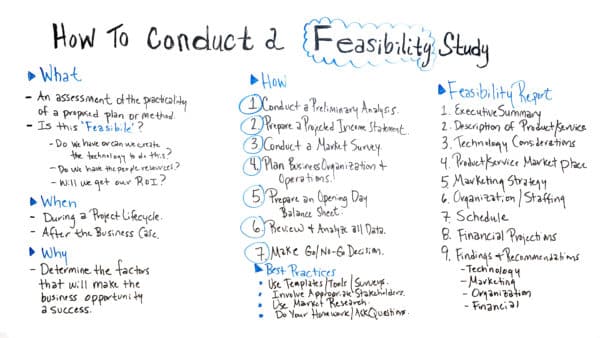
Feasibility Analysis Definition
Basically, it’s an assessment of the practicality of a proposed plan or method. Basically, we’ll want to want to know, is this feasible? Some of the questions that may generate this or we can hear people asking are, “Do we have or can we create the technology to do this? Do we have the people resource who can produce this and will we get our ROI, our Return On Investment?”
When to Do a Feasibility Study?
So when should you do the feasibility study? it’s done during a project lifecycle and it’s done after the business case is established or justification for undertaking the project because the business case outlines what we’re proposing is under scrutiny of the study.
So why do we do this? The reason we do this is because we need to determine the factors that will make the business opportunity a success or uncover if there is a fatal flaw in the current plan.
How to Conduct a Feasibility Study?

We conduct a preliminary analysis of what all’s involved in the business case and what we’re analyzing and what we’re trying to determine is feasible. Then we prepare a projected income statement. We need to know what are the income streams, how are we going to make money on this? Where’s the revenue coming from? We also need to conduct a market survey.
We need to know, is this a demand? Is there a market for this? Are customers willing to use this service and pay an amount for it that generates an adequate profit for us?
The fourth one is, plan the business organization and the operations. Like, what is the structure, what kind of resources do we need? What kind of staffing requirements do we have?
We also want to prepare an opening day balance sheet. What are the…how again, what are the expenses, what’s the revenue and to ensure that being able to determine if we’re going make our ROI.
We want to review and analyze all of the data that we have and with that, we’re going to determine, we’re going to make a go, no-go decision. Meaning, are we going to do this project or this business opportunity or not.
Well, here’s some of the best practices to use during your feasibility study.
One is, use templates, tools and surveys that exist today. The great news is, data is becoming more and more prevalent. There are all kinds of technologies. There are groups that they do nothing but research. Things that we can leverage today.
We want to involve the appropriate stakeholders to ensure that input is being considered from the different people involved. We also want to use again the market research to ensure we’re utilizing good, reliable data, not just assumptions.
Above all, do your homework, meaning act like is if this is your project, if it’s your money. So do your homework and do it well and make sure you obtain and utilize credible data.
What Is a Feasibility Report?
Prepare an executive summary of the business opportunity that you’re evaluating and the description of the product or the service.
You want to look at different technology considerations. Is it technology that you’re going to use? Are you going to build the technology?
What kind of product and service marketplace and being able again, to identify the specific market you’re going to be targeting. Also, what is the marketing strategy you’re going to use to target the marketplace?
And also what’s the organizational structure? What are the staffing requirements? What people do you need to deliver the product or service and even support it?
We want to know the schedule to be able to have the milestones to ensure that as we’re building things, that as we’re spending money that we’re beginning to bring in income to pay and knowing when we’re going to start recuperating some of the funding. Again, which also ties into the financial projections.
Again, we’ll probably talk about technology. Are you going to build it? Are you going to buy it? What’s the marketing strategies for the specific marketplace organization? You may have some recommendations for whether you’re going to insource the staff, maybe you are going to outsource some staff and what that looks like and also financial recommendation.
Business feasibility studies look at the viability of a set of ideas with a direct emphasis on identifying the key problem areas. The key question that an effective Feasibility Study needs to address is:
Will the idea work and should you proceed with it? A feasible study addresses the positioning in the market space of a product, its main clientele, pricing models, and where and how the business will operate.
In some instances feasibility studies also have a technical component built into them, requiring an understanding of how a specific technology will work based on a specific business model. It provides an in-depth analysis on the business and develops ways in which it can succeed at optimal levels. It can also become a very powerful tool for raising private as well as bank-based capital. Feasibility studies can be used in many ways but primarily focus on proposed new business ventures.
Tech firms and others with a business idea should undertake a feasibility study to determine the viability of their idea before proceeding with the development of a business. Determining early that a business idea will not work saves time, money, and heartache later. A feasible business venture is one where the business will generate adequate cash flow and profits, withstand the risks it will encounter, remain viable in the long-term, and meet the goals of the founders. The venture can be either a start-up business, the purchase of an existing business, an expansion of current business operations, or a new enterprise for an existing business.
Feasibility Studies can provide your organization with valuable data before entering a new market both domestically and internationally. They allow you to analyze the expenditures and create a set of cash flow requirements, and exit strategies before your organization is too committed to a project. It provides an organization with the ability to shift courses before major infrastructure investments are committed. Good feasibility studies look at the relationship between the costs associated with entering a business venture and the value that is produced.
LazrTek feasibility studies have included business development, new market entry both domestically and internationally, real estate development and re-development ventures, and technology investments. Hafezi Capital’s Feasibility Studies have been used by nonprofits, corporations, governments, and NGO’s as a means to understand new project cost, and to obtain bank financing. Many times the underwriting department of banks have hired us to help them in their decision making process. Thus, our analysis is relied upon to determine the validity of project, and its type of financing.
The feasibility study outlines and analyzes several alternatives or methods for achieving business success. The feasibility study helps to narrow the scope of the project to identify the best business scenario(s). The business plan deals with only one alternative or scenario. The feasibility study helps to narrow the scope of the project to identify and define two or three scenarios or alternatives. The person or business conducting the feasibility study may work with the group to identify the “best” alternative for their situation.
This becomes the basis for the business plan. The feasibility study is conducted before the business plan. A business plan is prepared only after the business venture has been deemed to be feasible. If a proposed business venture is considered to be feasible, a business plan is usually constructed next that provides a “roadmap” of how the business will be created and developed. The business plan provides the “blueprint” for project implementation. If the venture is deemed not to be feasible, efforts may be made to correct its deficiencies, other alternatives may be explored, or the idea is dropped.
The data within a feasibility study will help with:
- Key ingredients to business success
- Identify logistical, technical requirements and other business-related problems and solutions
- Develop market positioning strategies
- Establish if real customers within our ideal customer persona will want our offering and if they are willing to pay a price that allows an adequate profit
- Develop Correct Pricing model for survivability
- Present a comprehensive plan to investor(s) for raising capital; and
- Serve as a key foundation pillar for developing a viable and realistic business plan
Well-developed Feasibility studies contain a comprehensive, and detailed plan about your business structure, your products and services, the market, delivery logistics, the financial resources needed to implement it correctly, and ways to run the business efficiently.
Five Key Areas
A professional feasibility study will be broken down into five key areas, namely:
- Technical Feasibility – this component of the study reviews the technical resources required or available to the organization to implement the business model. Technical feasibility ensures that the organization has the resources, environment, human capital, and raw resources to implement the business model in a financially lucrative way. Technical feasibility will align technical requirements with business requirements to ensure that the cash flows are sustainable.
- Economic Feasibility – helping organizations assess the project’s viability, cost, and benefits associated with the project before financial resources are allocated. It helps decision-makers determine the positive economic benefits to the organization that the proposed new business endeavor will provide, and helps quantify them. If this is undertaken in an emerging market, the various economic barriers need to be analyzed to ensure project success.
- Legal Feasibility – investigates if the proposed system conflicts with legal requirements and laws associated with the country in which you are engaging in business and the home country of the organization.
- Operational Feasibility – reviews the organizational structure, human capital, and financial demand, reliability, maintainability, supportability, usability, dispensability, sustainability, affordability, and implementability of the project. It brings together the entirety of the companies capabilities and provides the outline to senior managers. The aim is to analyze and determine if your business needs can be fulfilled by using the proposed solution. It also measures how well the proposed system solves problems and takes advantage of the opportunities identified during scope definition.
- Scheduling Feasibility is the modeling of the project’s implementation timeline. Projects that go over and are too expensive require more money. Thus, ensuring the correct timeline with the resources offered is key to project success. Scheduling requires an estimation of how much time the system will take to complete, and with our technical skills.
Contact LazrTek today to help you with a feasibility study to ensure your business success: Harold@Lazrtek.com or call (469) 536-8478.


